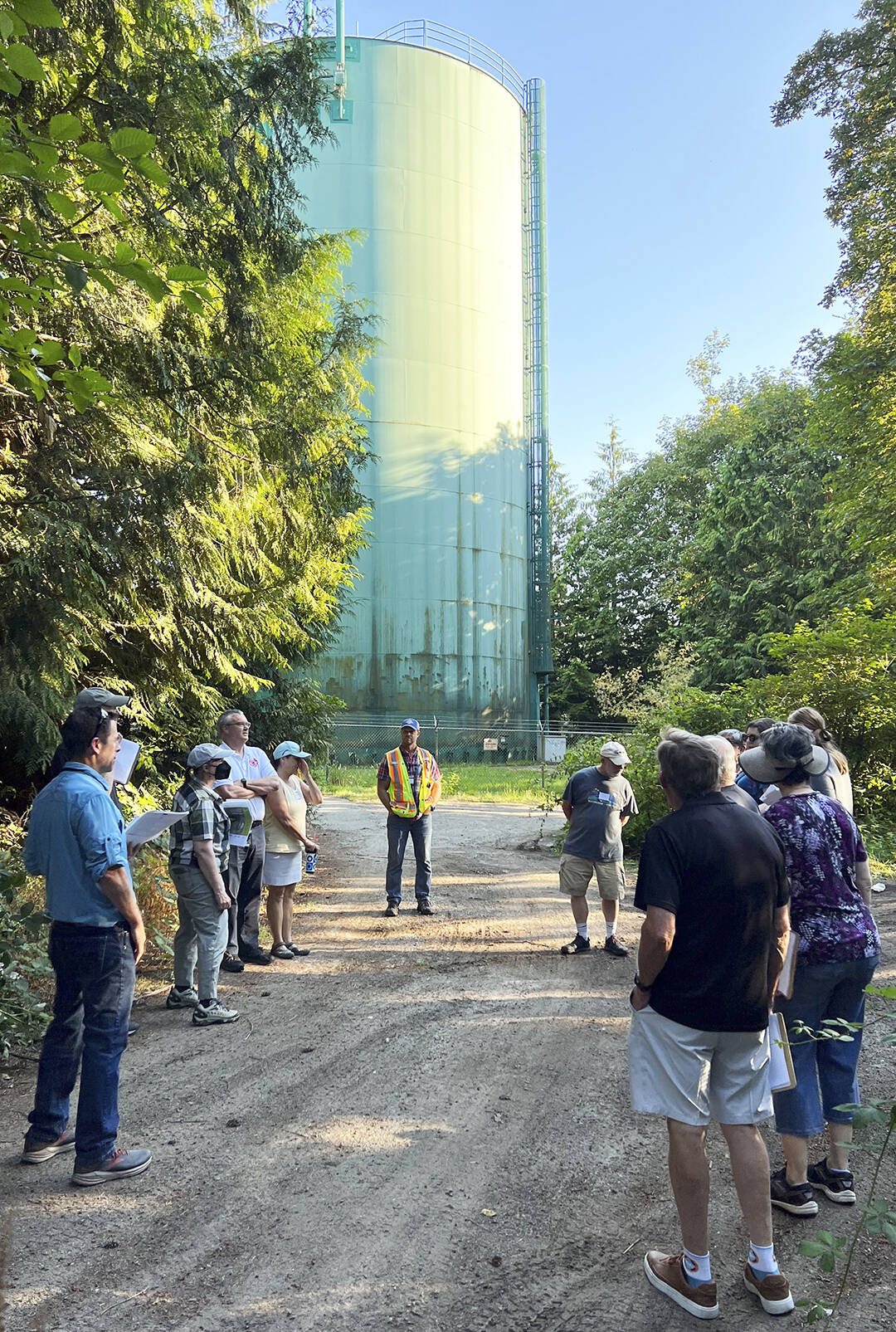A new group on Bainbridge Island has begun hosting public information sessions about the city’s plans for growth, but they’re not planners — they’re scientists.
Three hydrogeologists and one geochemist with the Water Resources Committee, part of new environmental engagement nonprofit Bainbridge Conservation Coalition, spoke to over 50 people about BI’s unique freshwater systems and the upcoming Groundwater Management Plan at the BI Senior Community Center March 10.
WRC members Melanie Keenan and Malcolm Gander believe that because Bainbridge’s drinking water comes from a single limited source, development in certain areas of BI should be contingent on the availability of water. BI policymakers should prioritize a final draft of the Groundwater Management Plan to guide the Comprehensive Plan, the state-mandated document that outlines how a municipality will account for growth in the next 20 years, they said.
The order of operations is important because the WRC believes BI’s unique hydrogeology could exempt the city from housing requirements stipulated by the Growth Management Act — meaning less upzoning of neighborhood centers and more restrictions on development in dense areas.
Deputy mayor John Quitslund, who attended the WRC meeting, believes that would be putting the cart before the horse.
“Planning for housing and a growing population, we’re planning for something that happens very slowly. We’re trying to make certain things possible. People are objecting to the mere planning process as if it’s a landslide headed our way, but we’re not in that situation,” Quitslund said. “Housing is about living within our means. There’s no question about the data and the research; it’s all relevant, but we have to consider that we are under a deadline pressure. It would be irresponsible to continue beyond the end of June.”
The state has pushed the official target for a completed Comprehensive Plan to June. The Draft Environmental Impact Statement, a 600-page preliminary document that proposed three different growth strategies that Bainbridge’s Comp Plan may take, was completed last July and publicly commented on throughout October.
Between gathering and responding to over 2,700 public comments, it’s become a protracted process, Quitslund said.
BCC boardmember Lisa Macchio advocated for more public involvement in the Groundwater Management Plan, in the same manner as the DEIS. She envisioned a public meeting with a draft GMP where residents could provide written comments and receive responses from the city, followed by finalization of the document. She also stated that a third-party technical review of the GMP would be beneficial.
Quitslund agreed that there had not been much public input on the GMP, and welcomed civic engagement. But if the GMP were to garner the same level of comments as the Comp Plan, that could mean another six months of digestion, and BI might miss its deadline.
“There hasn’t been [one] about the GMP yet because the very process of drafting a plan was contentious,” he said.
Most of Bainbridge’s drinking water comes from wells, which tap into groundwater fed by rain and other precipitation, Keenan said. Groundwater is considered an aquifer if the water it contains can be extracted from the sediment, like squeezing a sponge, or flows out of the earth naturally, as in a spring.
The water supply is generated by the city, Kitsap Public Utility District and over 1,000 private wells servicing either individual homes or smaller water systems. Those three categories each generate about one-third of the water extracted from wells, Keenan said.
As long as well users don’t overdraw and groundwater is able to recharge, aquifers can persist for hundreds of thousands of years. But if the balance is thrown off and outsized demand is placed on BI’s water resources, the aquifer could become unstable, which could lead to many consequences, the WRC members said. Wells and streams can go dry, land surfaces can compact and shrink, seawater and coastal erosion can increase and the aquifer can lose its ability to hold water permanently.
That’s why Keenan and Gander pushed for BI to be designated a sole-source aquifer in 2013 — to enshrine its aquifer in local policy, they said. Specific areas of BI became protected aquifer-recharge zones, and any federal funding the city receives for development projects must consider its effects on the aquifer.
At the time, the city’s community Environmental Technical Advisory Committee — which Keenan, Gander and Kratzer sat on — also recommended that BI “should have the goal of remaining self-sufficient with respect to water resources, and that alternative sources are not advisable (i.e., a pipeline across Agate Pass Bridge or desalination of seawater).”
Keenan’s recent presentation called on the city to consider this designation while drafting its GMP. She pointed out how some of the expanded development footprints on Comprehensive Plan maps will overlap with aquifer protection areas and other regulated critical freshwater areas, such as wetlands and streams.
The WRC will host monthly meetings to raise public awareness and encourage participation in the GMP and to advocate for its inclusion in the city’s Comp Plan update.



